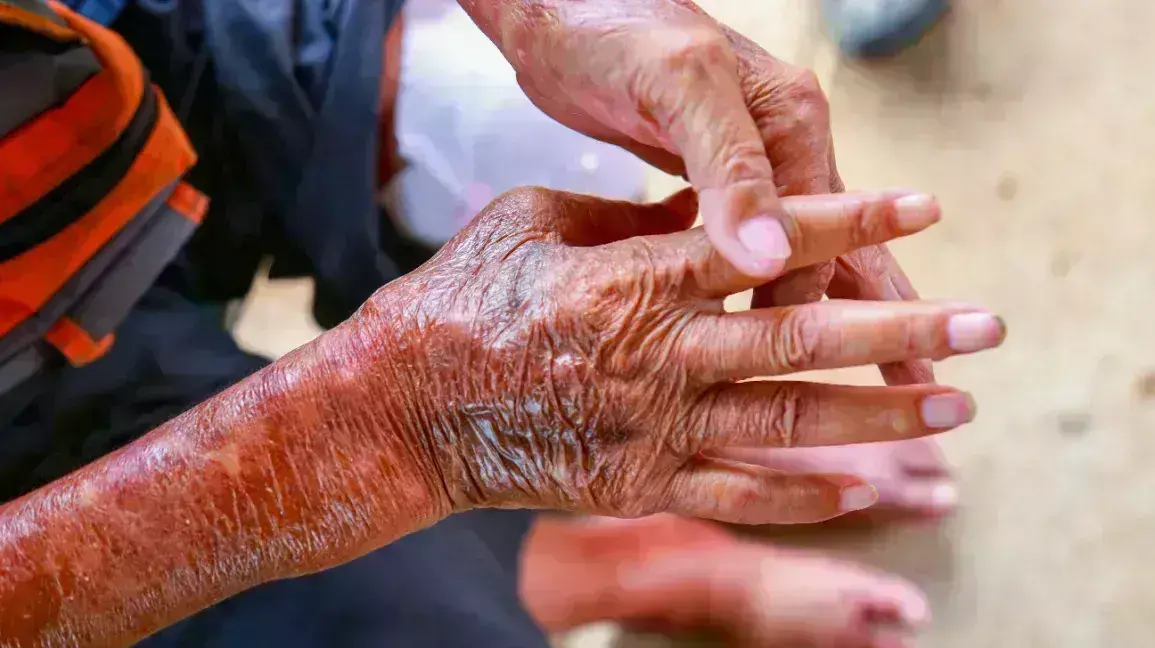- Home
- Medical news & Guidelines
- Anesthesiology
- Cardiology and CTVS
- Critical Care
- Dentistry
- Dermatology
- Diabetes and Endocrinology
- ENT
- Gastroenterology
- Medicine
- Nephrology
- Neurology
- Obstretics-Gynaecology
- Oncology
- Ophthalmology
- Orthopaedics
- Pediatrics-Neonatology
- Psychiatry
- Pulmonology
- Radiology
- Surgery
- Urology
- Laboratory Medicine
- Diet
- Nursing
- Paramedical
- Physiotherapy
- Health news
- Fact Check
- Bone Health Fact Check
- Brain Health Fact Check
- Cancer Related Fact Check
- Child Care Fact Check
- Dental and oral health fact check
- Diabetes and metabolic health fact check
- Diet and Nutrition Fact Check
- Eye and ENT Care Fact Check
- Fitness fact check
- Gut health fact check
- Heart health fact check
- Kidney health fact check
- Medical education fact check
- Men's health fact check
- Respiratory fact check
- Skin and hair care fact check
- Vaccine and Immunization fact check
- Women's health fact check
- AYUSH
- State News
- Andaman and Nicobar Islands
- Andhra Pradesh
- Arunachal Pradesh
- Assam
- Bihar
- Chandigarh
- Chattisgarh
- Dadra and Nagar Haveli
- Daman and Diu
- Delhi
- Goa
- Gujarat
- Haryana
- Himachal Pradesh
- Jammu & Kashmir
- Jharkhand
- Karnataka
- Kerala
- Ladakh
- Lakshadweep
- Madhya Pradesh
- Maharashtra
- Manipur
- Meghalaya
- Mizoram
- Nagaland
- Odisha
- Puducherry
- Punjab
- Rajasthan
- Sikkim
- Tamil Nadu
- Telangana
- Tripura
- Uttar Pradesh
- Uttrakhand
- West Bengal
- Medical Education
- Industry
Skin telangiectasias in Systemic sclerosis sine scleroderma associated with diastolic heart dysfunction

Skin telangiectasias in Systemic sclerosis sine scleroderma associated with diastolic heart dysfunction suggests a new study published in the JAMA Dermatology
Systemic sclerosis (SSc) sine scleroderma (ssSSc) is a subset of SSc defined by the absence of skin fibrosis. Little is known about the natural history and skin manifestations among patients with ssSSc.
A study was done to characterize the clinical phenotype of patients with ssSSc compared with patients with limited cutaneous SSc (lcSSc) and diffuse cutaneous SSc (dcSSc) within the EUSTAR database.
This longitudinal observational cohort study based on the international EUSTAR database included all patients fulfilling the classification criteria for SSc assessed by the modified Rodnan Skin score (mRSS) at inclusion and with at least 1 follow-up visit; ssSSc was defined by the absence of skin fibrosis (mRSS = 0 and no sclerodactyly) at all available visits. Data extraction was performed in November 2020, and data analysis was performed from April 2021 to April 2023.
Results
Among the 4263 patients fulfilling the inclusion criteria, 376 (8.8%) were classified as having ssSSc (mean [SD] age, 55.3 [13.9] years; 345 [91.8%] were female). At last available visit, in comparison with 708 patients with lcSSc and 708 patients with dcSSc with the same disease duration, patients with ssSSc had a lower prevalence of previous or current digital ulcers (28.2% vs 53.1% in lcSSc; P < .001; and 68.3% in dcSSc; P < .001) and puffy fingers (63.8% vs 82.4% in lcSSc; P < .001; and 87.6% in dcSSc; P < .001). By contrast, the prevalence of interstitial lung disease was similar in ssSSc and lcSSc (49.8% and 57.1%; P = .03) but significantly higher in dcSSc (75.0%; P < .001). Skin telangiectasias were associated with diastolic dysfunction in patients with ssSSc (odds ratio, 4.778; 95% CI, 2.060-11.081; P < .001). The only independent factor for the onset of skin fibrosis in ssSSc was the positivity for anti–Scl-70 antibodies (odds ratio, 3.078; 95% CI, 1.227-7.725; P = .02). Survival rate was higher in patients with ssSSc (92.4%) compared with lcSSc (69.4%; P = .06) and dcSSc (55.5%; P < .001) after up to 15 years of follow-up.
Systemic sclerosis sine scleroderma should not be neglected considering the high prevalence of interstitial lung disease (>40%) and SSc renal crisis (almost 3%). Patients with ssSSc had a higher survival than other subsets. Dermatologists should be aware that cutaneous findings in this subgroup may be associated with internal organ dysfunction. In particular, skin telangiectasias in ssSSc were associated with diastolic heart dysfunction.
Reference:
Lescoat A, Huang S, Carreira PE, et al. Cutaneous Manifestations, Clinical Characteristics, and Prognosis of Patients With Systemic Sclerosis Sine Scleroderma: Data From the International EUSTAR Database. JAMA Dermatol. Published online June 28, 2023. doi:10.1001/jamadermatol.2023.1729
Keywords:
Skin, telangiectasias, Systemic, sclerosis, sine, scleroderma, associated, diastolic, heart, dysfunction, Lescoat A, Huang S, Carreira PE, JAMA Dermatology
Dr. Shravani Dali has completed her BDS from Pravara institute of medical sciences, loni. Following which she extensively worked in the healthcare sector for 2+ years. She has been actively involved in writing blogs in field of health and wellness. Currently she is pursuing her Masters of public health-health administration from Tata institute of social sciences. She can be contacted at editorial@medicaldialogues.in.
Dr Kamal Kant Kohli-MBBS, DTCD- a chest specialist with more than 30 years of practice and a flair for writing clinical articles, Dr Kamal Kant Kohli joined Medical Dialogues as a Chief Editor of Medical News. Besides writing articles, as an editor, he proofreads and verifies all the medical content published on Medical Dialogues including those coming from journals, studies,medical conferences,guidelines etc. Email: drkohli@medicaldialogues.in. Contact no. 011-43720751


